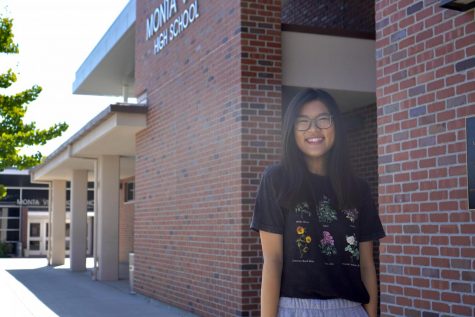‘Abominable’ Review: The importance of Asian representation
The cultural significance of ‘Abominable’ and what it means for Asian Americans
October 9, 2019
“Abominable,” a new family-friendly animated film produced by Dreamworks, debuted on September 27th with ticket sales reaching $20.85 million by the end of its opening weekend. The film made history, as it is the first Hollywood animated film to feature a modern-day Chinese family. Dreamworks heavily relied on its Chinese production partner, Pearl Studio, to bring cultural authenticity to the setting and characters.
The movie tells the story of a teenage girl, Yi (voiced by Chloe Bennett), who discovers a runaway yeti, a mythical ape-like creature, on the roof of her apartment building in modern-day Shanghai. She names the yeti Everest and makes it her mission to get Everest to his family in the Himalayas. Her two neighbors, superficial Jin (voiced by Tenzing Trainor) and his younger cousin Peng (voiced by Albert Tsai), join Yi’s quest to bring Everest home. On their journey, they must evade Burnish (voiced by Eddie Izzard), a wealthy villain, and Dr. Zara (voiced by Sarah Paulson), a zoologist with a secret agenda of her own.
As expected, Dreamworks animators truly outdid themselves in this film. From the very beginning, detailed visuals of Yi running around the city to do miscellaneous jobs immediately draw in viewers with shots of high rise apartment buildings, neon signs above brightly lit stores and the classic waterfront of Shanghai. As Yi and her neighbors make their way across the country to the Himalayas, the movie perfectly captures the stunning, colorful scenery of Chinese landscapes, including rolling green hills and a tidal wave of a never-ending field of yellow flowers. These visuals give the audience a positive side of the China they may have imagined differently and highlights hidden aspects of a country foreign to many Americans.
View this post on Instagram
The movie incorporates family-friendly humor to add a light-hearted touch to the development of the characters’ relationships with each other while exploring a more profound message regarding the importance of family. Throughout the movie, the audience was continually fawning over Everest’s childish behavior, which perfectly complements Peng’s personality and leads to many moments of laughter for the audience.
Through humorous scenes and touching moments, “Abominable’s” heartwarming message shines clearly -– realizing the importance of family through finding your way home. As Yi helps Everest on his way back to the Himalayas, she realizes the importance of the family she has left. The movie ends with a wholesome scene back in her apartment with her doting mother, brassy grandmother and her new best friends, Jin and Peng – one big, happy family.
Although “Abominable” has a fairly simple plot, predictable ending and adorable, yet basic characters, what sets it apart from almost all past American cartoons is all of the faces in the movie – they’re almost all Chinese. There wasn’t a single time during my childhood when a movie theater played an animated film with an Asian in any starring role. This movie continued to open doors for Asian representation in the media following the major game-changer “Crazy Rich Asians”. By avoiding the whitewashing of minority roles and incorporating diversity on the big screen, representation will become standard, not a single occurrence every couple of decades.
View this post on Instagram
As an Asian American, I was thrilled to see that people cared to come out and watch a movie set in a different country and culture from them. To see people laugh because they related to something in the film instead of making fun of it. To see people view my culture’s food, customs and beliefs in a positive light rather than in a mocking manner. To see people realize the beauty and value of my culture instead of the version expressed by white stories in the past.
All of this was revolutionary to me and it had me wishing that my childhood self, who was unsure of how she fits with her peers culturally, saw this movie. I wish I could’ve seen this before I began believing my culture was abnormal and foreign, something that made me different from my white peers, something to be ashamed of. I wish I could’ve seen this before I begged my parents to trade dumplings and pork buns with pizza and tacos. I wish I could’ve seen this before I started hating my culture and my background–before I wanted to change my identity and escape my heritage.
This movie didn’t just make me accept my heritage — it made me proud. Proud to come from a country with such beautiful scenery and such a rich history. Proud that my origin country was represented authentically and respectfully and all its best qualities were highlighted in this film. They did Chinese culture justice and gave audiences the opportunity to see a modern Chinese lifestyle beyond the surface level and destroyed stereotypes.
“Abominable” sets an example for young Asian Americans all over the country. It allows them, and it allowed me, to see that Asians can play the role of the hero in a country where we never play the starring role. On the big screen, Asians can only play the main characters when the plot is set in an Asian country, but it is still a step in the right direction from no representation at all. Now is truly the turning point for Asians in the film industry and, eventually, our country. From “Crazy Rich Asians” to “Abominable” to “Mulan” coming out next year, I could not be more ecstatic to see my culture on the big screen.













